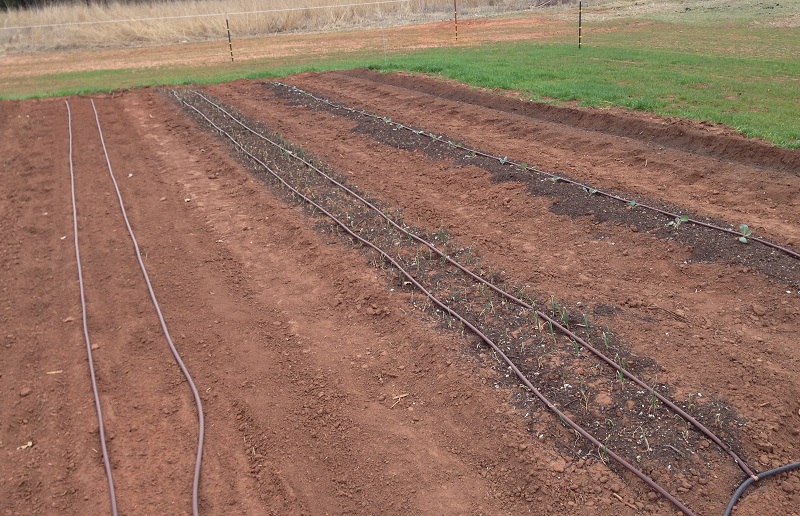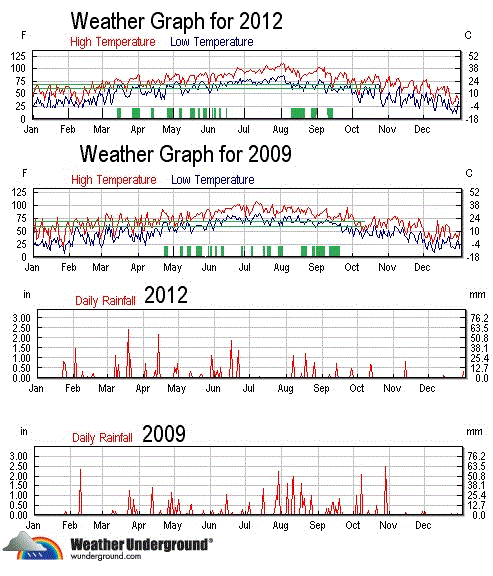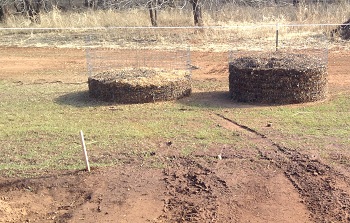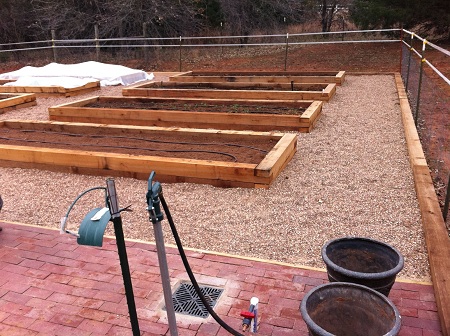After a few years a perennial garden begins to pay off. Many plants take some time to establish roots. After considerable maintenance and very little production, our little perennial section has become a bounty.
Most of the work involves weeding throughout the year. Blackberries and Asparagus cannot be tilled. Blackberries will send up shoots where ever a root is cut. They want to ramble. So the way to minimize their spreading is to mulch heavily and hand weed. We have used cotton seed hulls, stump grinding residue and grass clippings in this area. It is paying off. Weeds are easily pulled from the deep mulch.
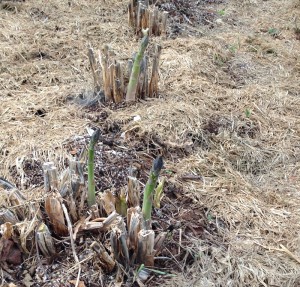 Our asparagus is maturing into the rich compost filled trenches where is was planted almost 3 years ago. The shoots are still emerging from where the crowns were planted. I am hopping that they will spread between the double row of plants. We are harvesting 1 – 3 pounds every other day of prime thick and tender shoots.
Our asparagus is maturing into the rich compost filled trenches where is was planted almost 3 years ago. The shoots are still emerging from where the crowns were planted. I am hopping that they will spread between the double row of plants. We are harvesting 1 – 3 pounds every other day of prime thick and tender shoots.
A friend of mine, Stefan Conrady, who is German, says that in Germany they produce white Asparagus. I image they mulch the crop with 1 foot of hay or some thin mulch. This would blanch the shoots and keep them from turning green. I may try this if we can conjure up some straw next year.
The strawberries are prolific too. Probably too prolific since we have not thinned them since planting. We planted about 25 plants of two early bearing varieties and those plants have spread to completely cover the rows. I am surprised that our raised beds are still intact too. The crown of the bed is still 1-2 feet higher than the isle.
Next year the strawberries will be thinned to 1 plant very 18 inches and fertilized. 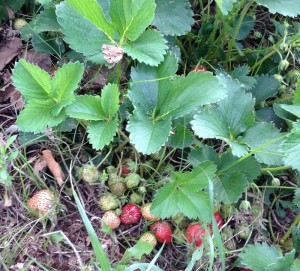 This year we will have many berries but not so big. Last year I made jam and will use larger jars. Lots of friends will get some.
This year we will have many berries but not so big. Last year I made jam and will use larger jars. Lots of friends will get some.
Some chive can be seen in the top photo. They and some oregano have done very well and can be harvested too. We also have cilantro going to seed. It was planted in October. These seeds will be used to start another batch which will be ready when tomatoes and some peppers are ripe.








